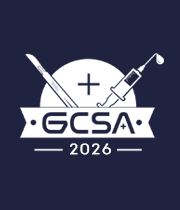Image-Guided Surgery and Navigation Technologies
The integration of real-time imaging into operative workflows has redefined how surgeons approach anatomical precision. Image-guided surgery and navigation technologies now allow clinicians to visualize critical structures with exceptional accuracy, reducing risks and improving outcomes. Techniques such as intraoperative CT, MRI, and fluorescence imaging, paired with advanced tracking systems, provide dynamic feedback during procedures. This real-time guidance is particularly valuable in neurosurgery, orthopedic reconstruction, and oncologic resections where millimeter-level accuracy is paramount. As these technologies become more accessible, the fusion of imaging data with surgical execution enhances both safety and efficiency. Surgeons are increasingly relying on digital overlays and navigation systems to tailor interventions to individual anatomy, marking a pivotal shift in personalized surgical care.



Title : Spontaneous colonic perforation in a pediatric patient with acute febrile lllness: A case report
Abhiraj Yadav, Manipal College of Medical Sciences, Nepal
Title : Unusual cause of small bowel obstructions in infants: A warning letter to parents
Gamal Al Saied, Al-Azhar University, Egypt
Title : From panic to protocol: A ?IP on developing a paediatric breast referral pathway
Neriah Mangion, University Hospital Sussex NHS Foundation Trust , United Kingdom
Title : Improving scrotal examination in male patients presenting with acute abdominal pain: An audit and quality improvement intervention
Maab Elsaddig, University Hospital Lewisham, United Kingdom
Title : Mapping pediatric general surgery training in low and middle income countries: A scoping review
Habba Mahal, University of Alberta, Canada
Title : Improving implementation of enhanced recovery after cesarean section protocol in resource limited setting of Koidu Government Hospital Sierra Leone 2024/25. A quality improvement project from evidence to reality
Hailemariam Getachew, PIH, Sierra Leone